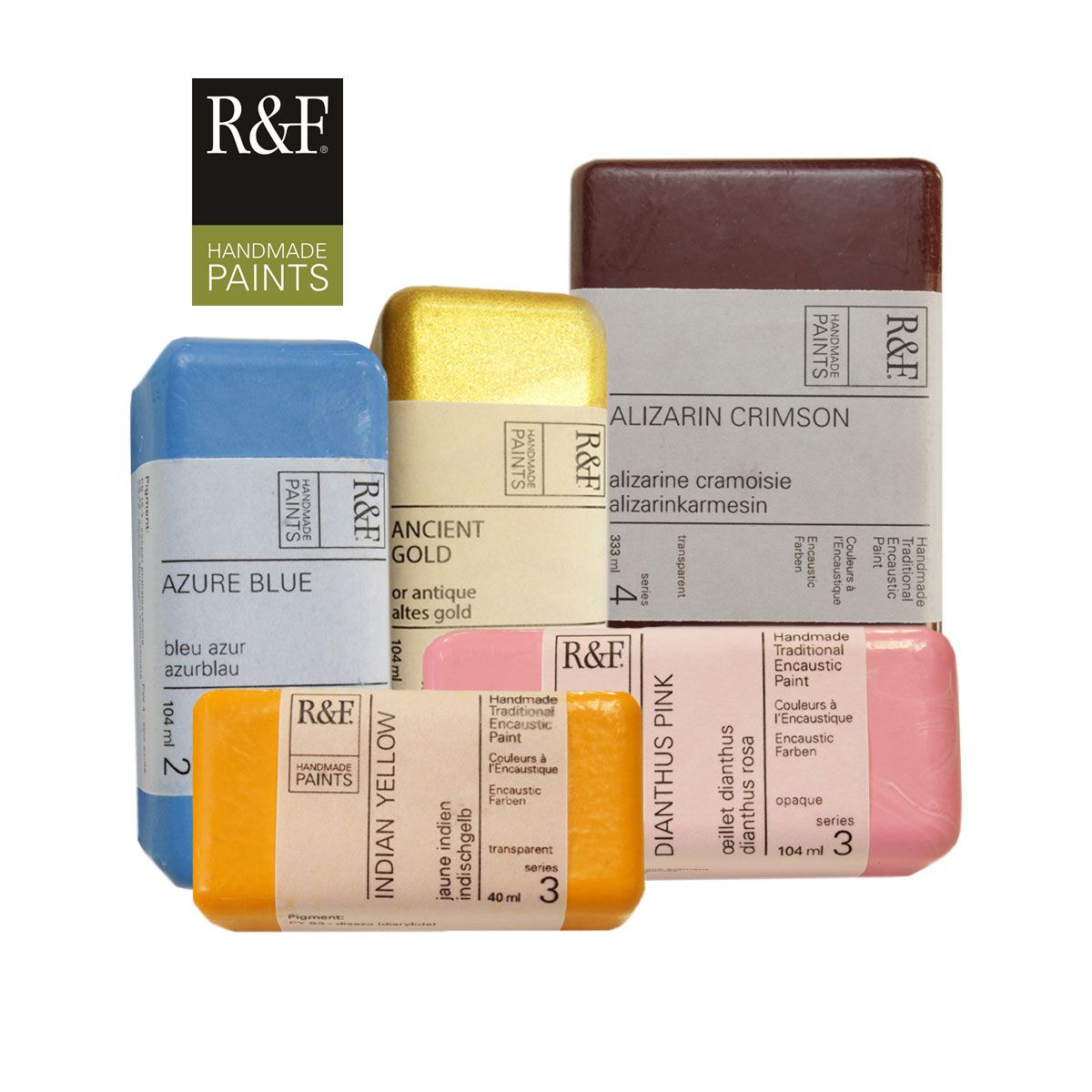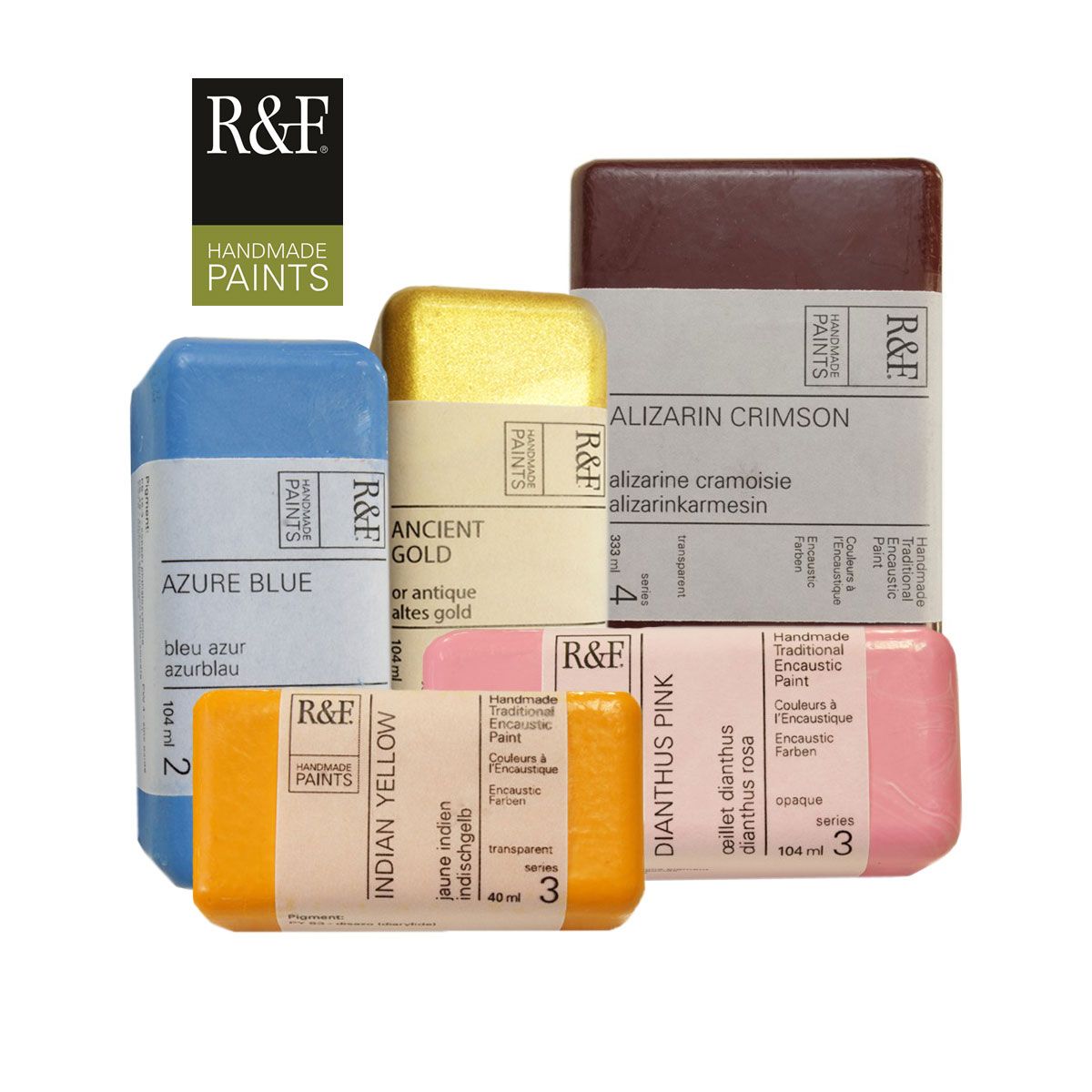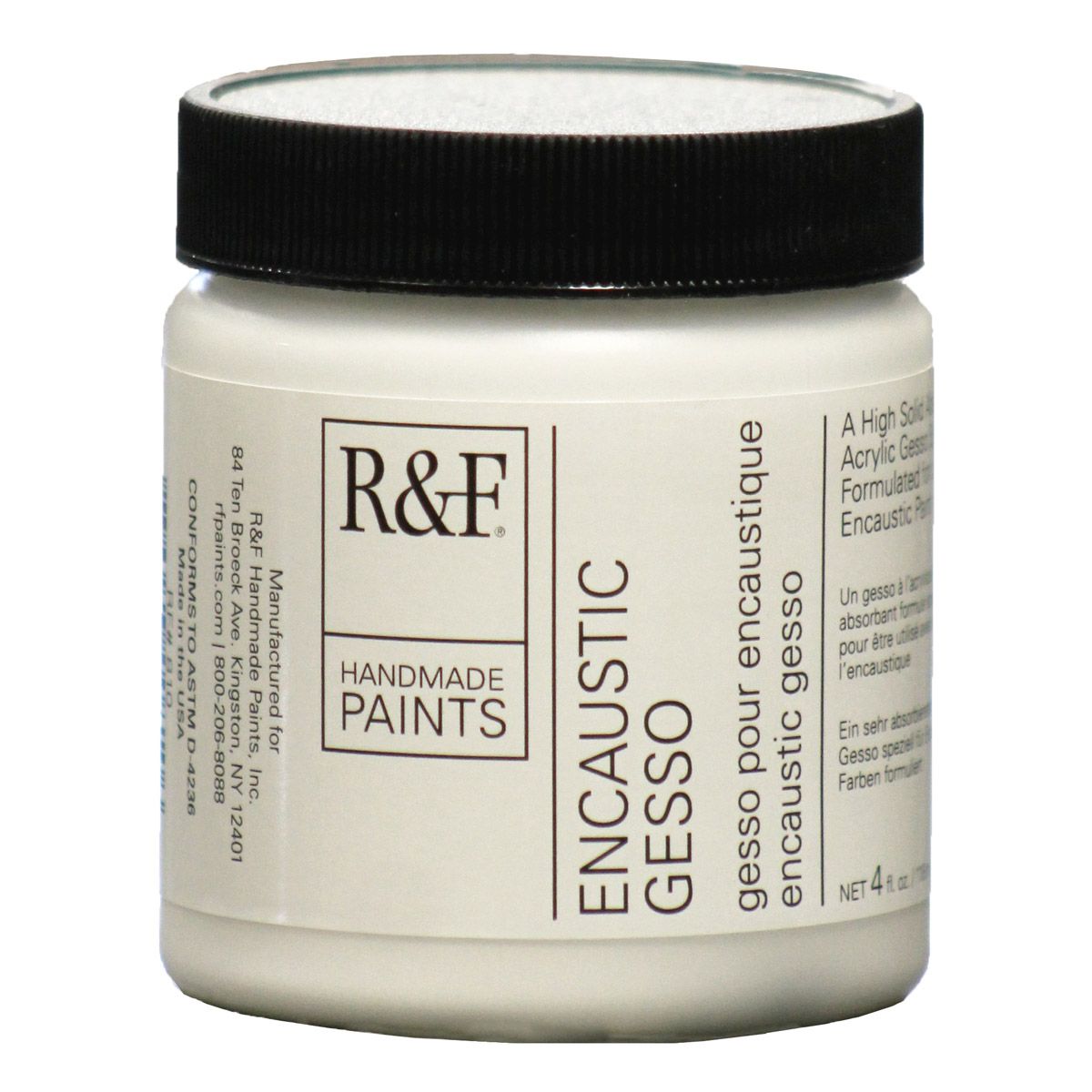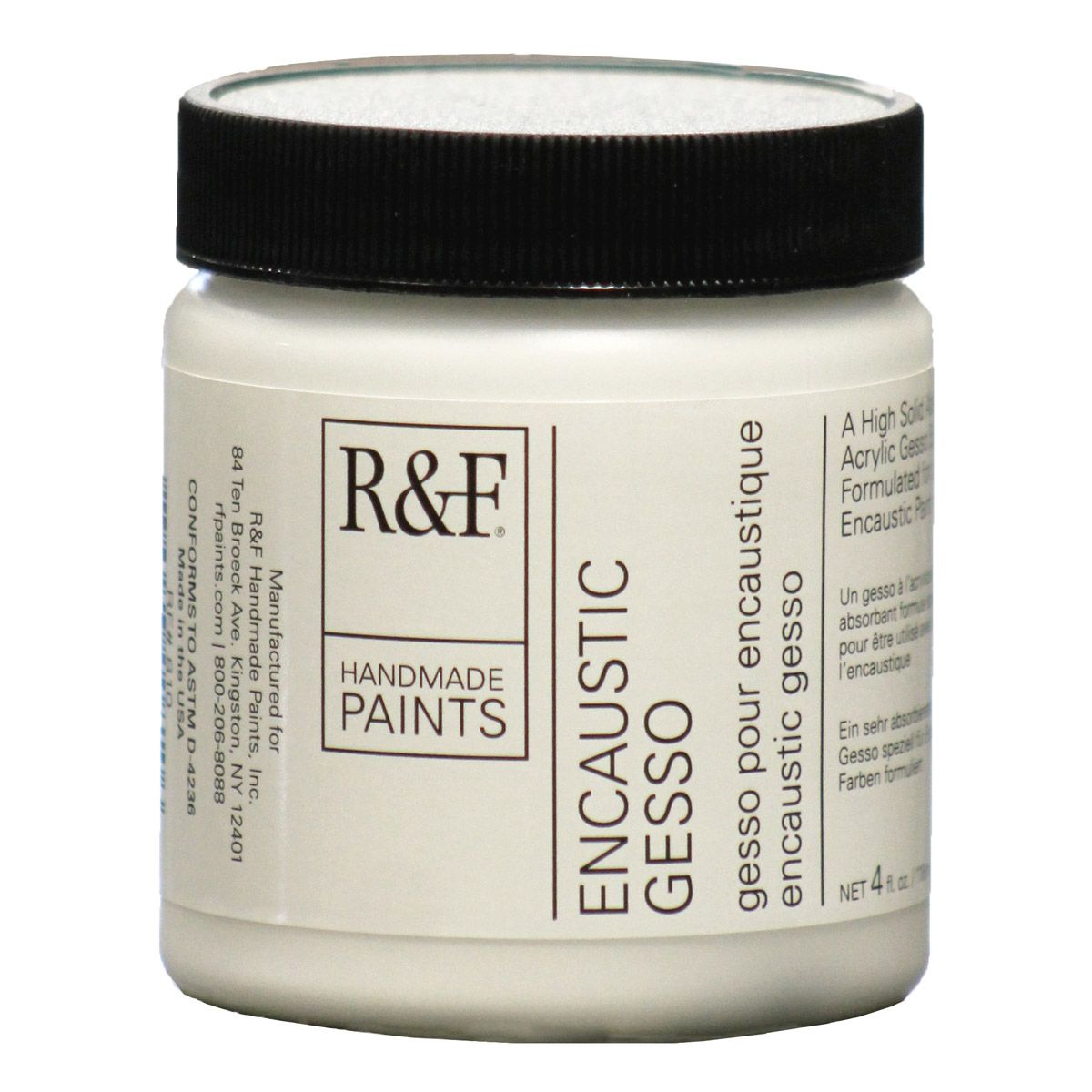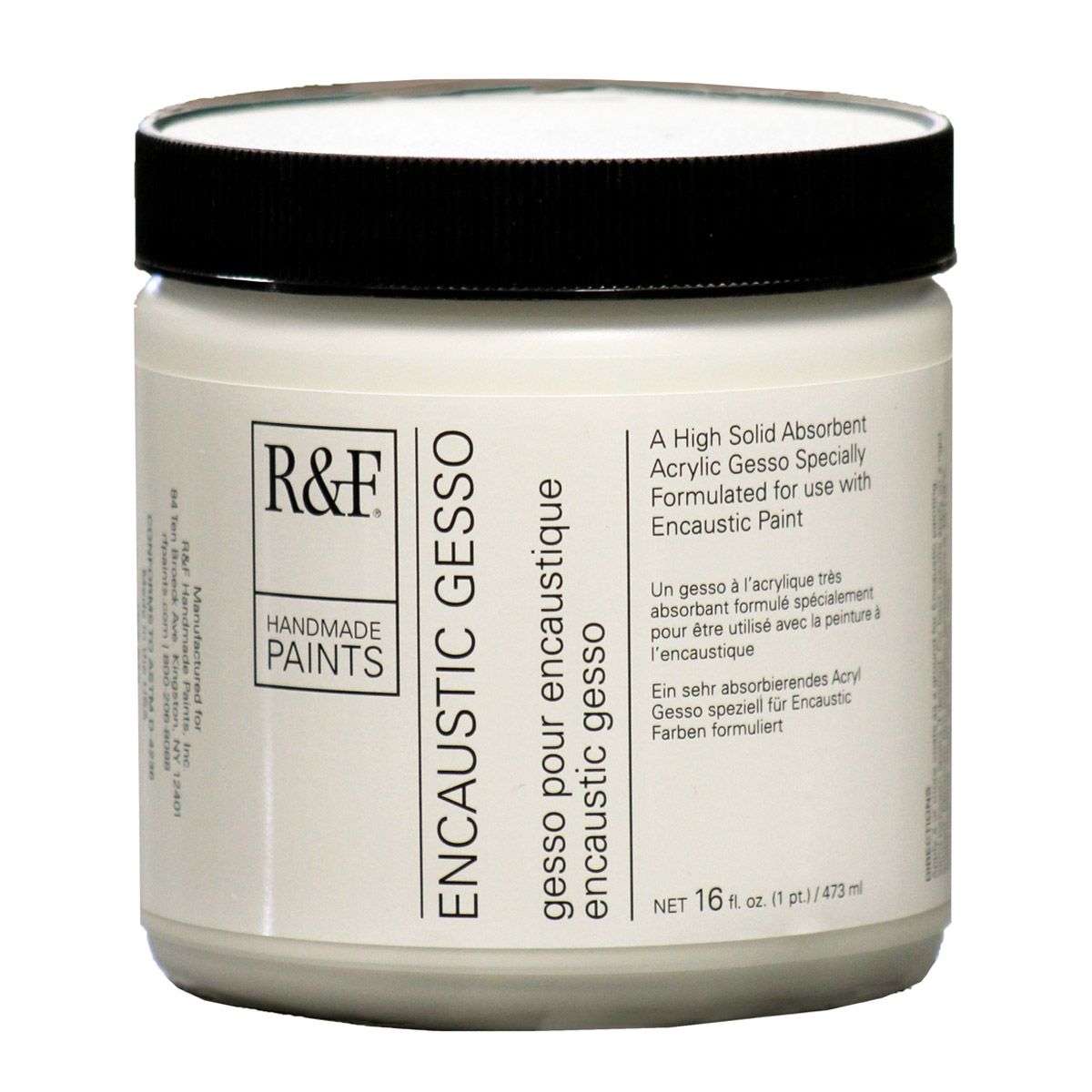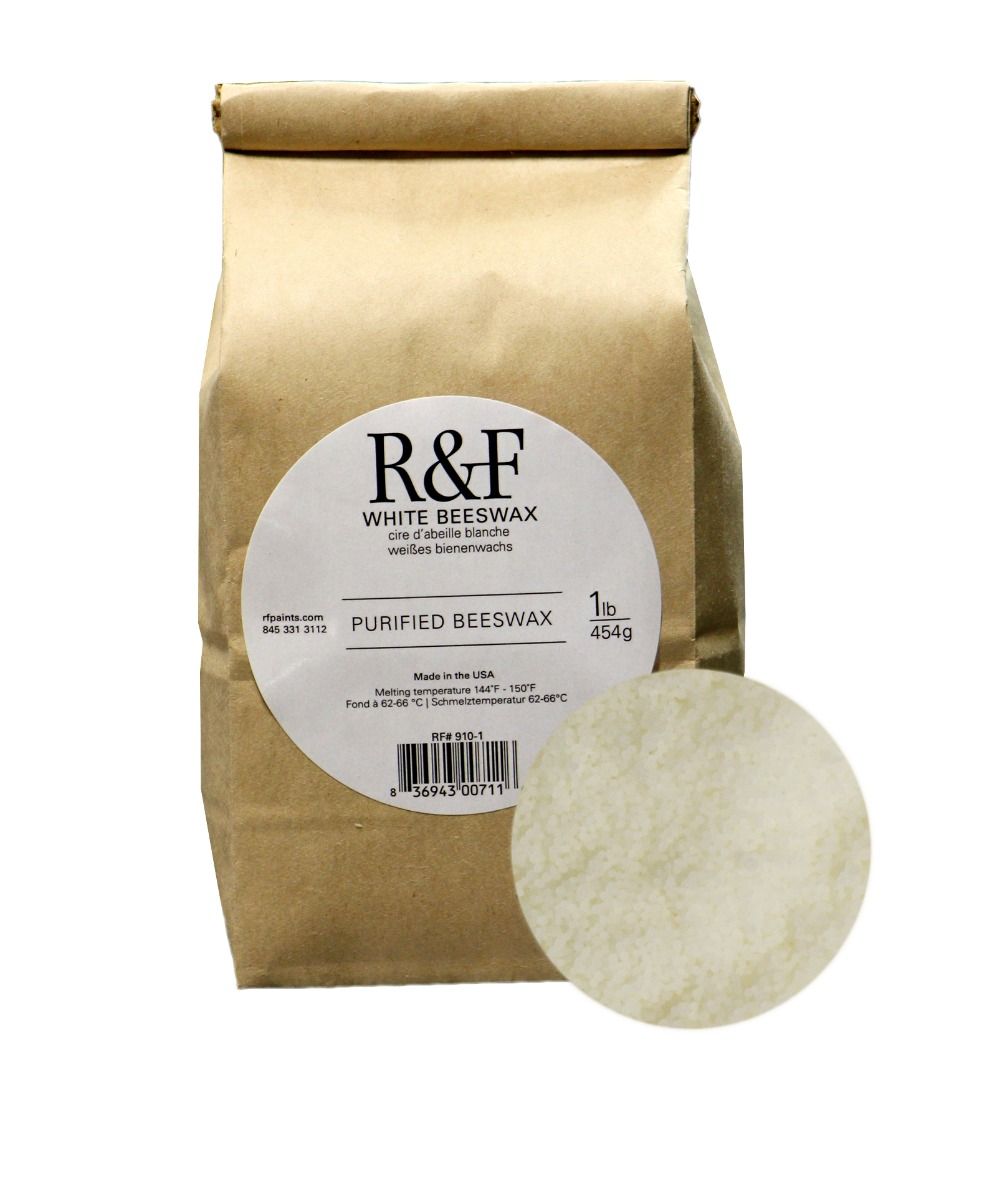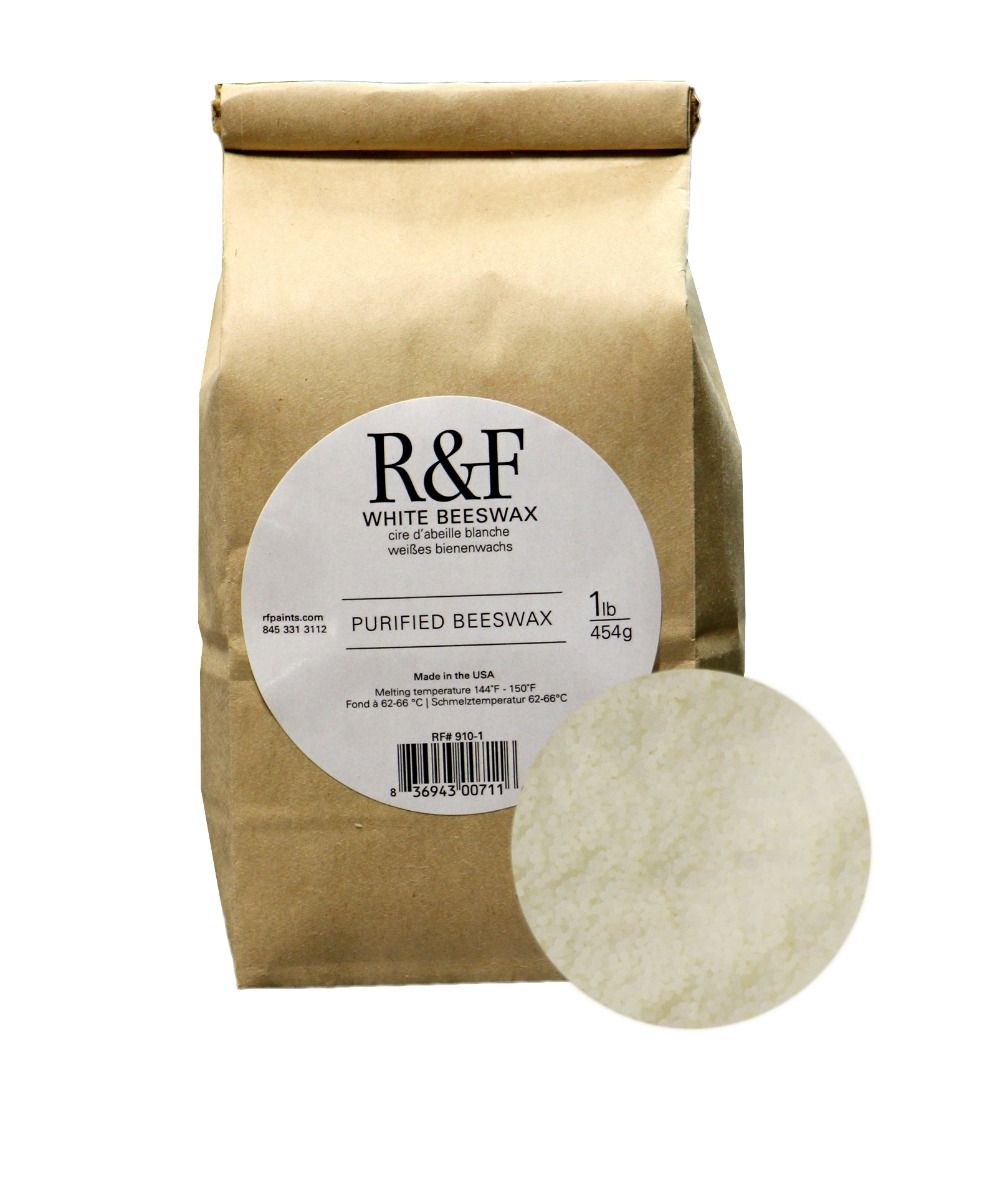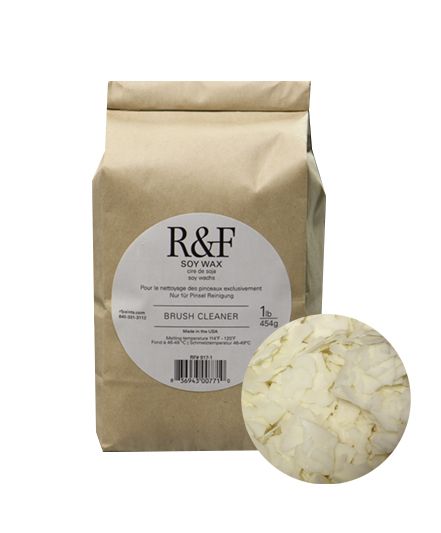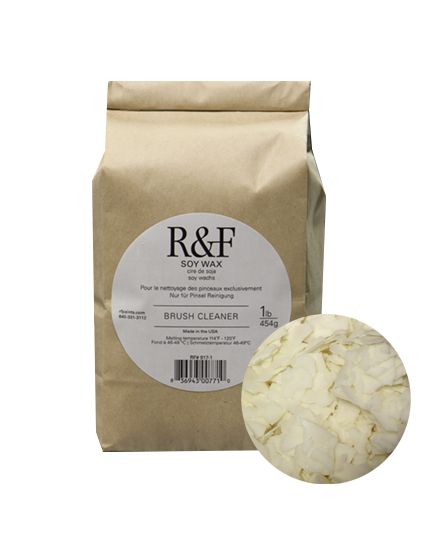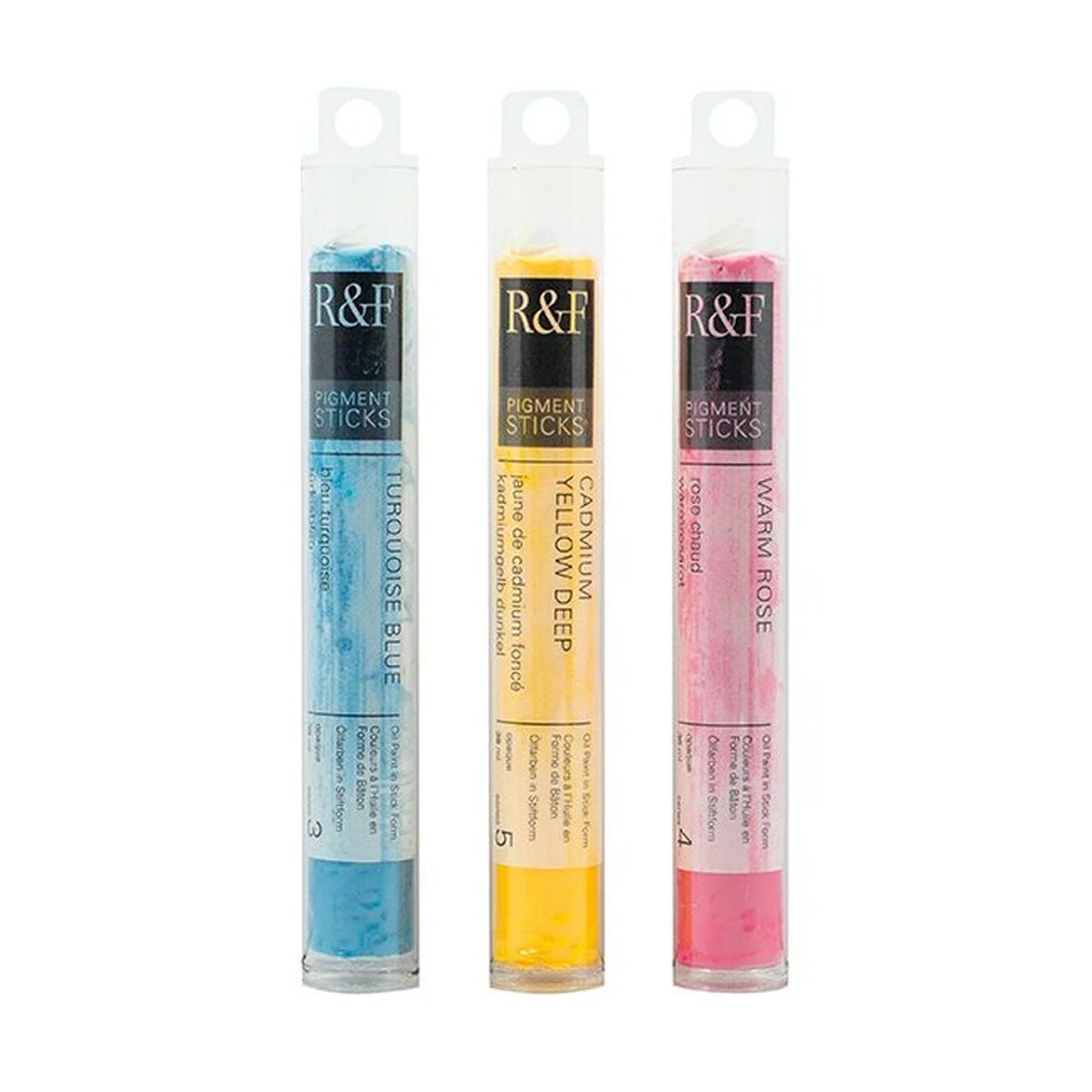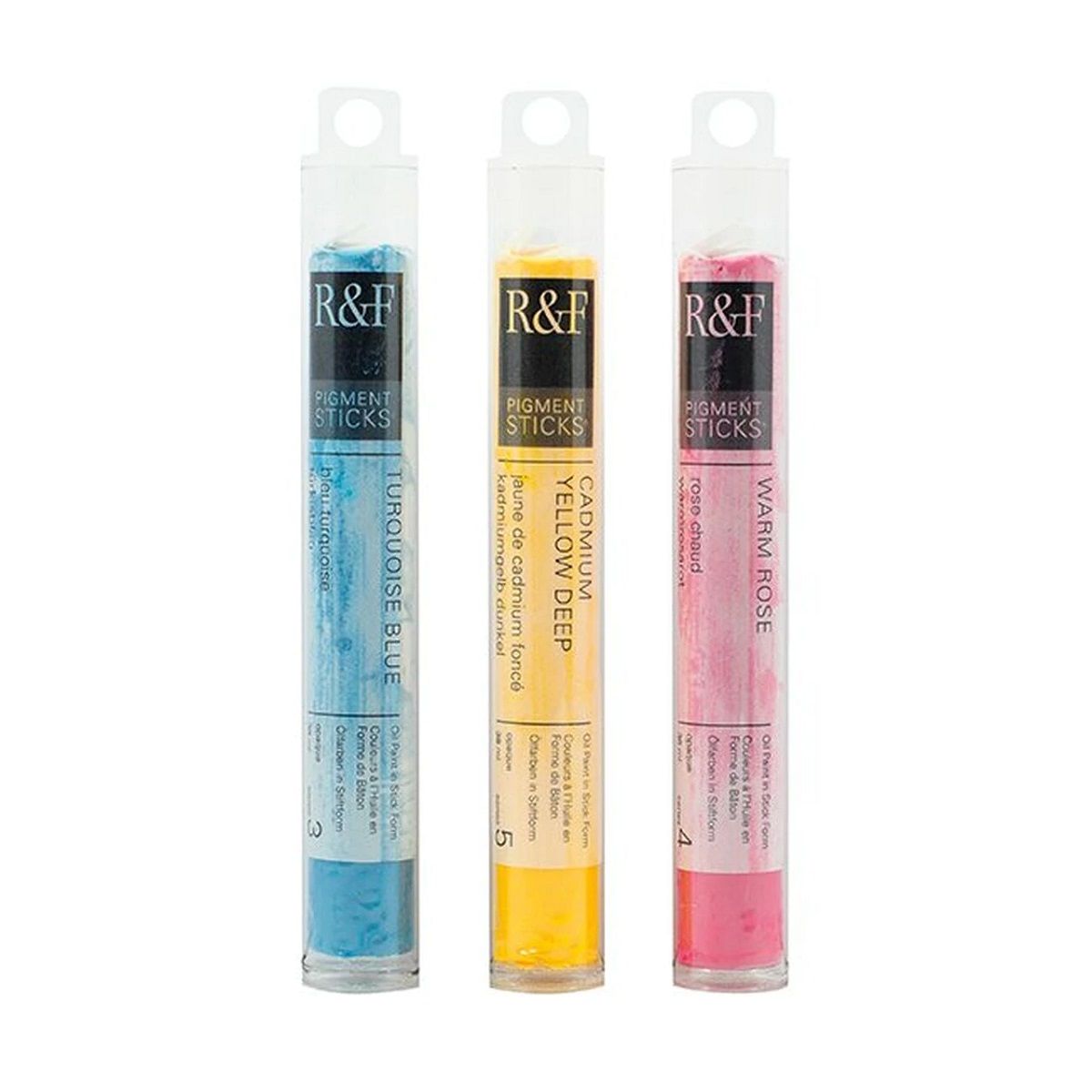R&F Encaustic Block, Cerulean Grey 40ml
R&F Encaustic Paint Block - Cerulean Grey, 40 ml
Not at all like Cerulean Extra Pale. The Raw Sienna makes it a very subtle pale earthy green. So close to Neutral Grey Pale in value and hue but check how different the tow appears in colour relationships. Mix of Cerulean Blue with Raw Sienna and Titanium-Zinc white.
- Pigment Composition: PB35-Cerulean Blue; PBr7-Raw Sienna; PW6-Titanium White; PW7-Zinc Sulphide White
- Paint Lines: Encaustic Pigment Stick
- Opacity: Semi-Transparent
- Pigment Stick Drying Rate: Medium
- Classification: Mixed
- Chemical Composition: Cerulean Blue + Raw Sienna + Titanium White + Zinc White
- Safety Information: Conforms to ASTM D-4236
R&F Encaustic Paint Block - Cerulean Grey, 40 ml
Not at all like Cerulean Extra Pale. The Raw Sienna makes it a very subtle pale earthy green. So close to Neutral Grey Pale in value and hue but check how different the tow appears in colour relationships. Mix of Cerulean Blue with Raw Sienna and Titanium-Zinc white.
- Pigment Composition: PB35-Cerulean Blue; PBr7-Raw Sienna; PW6-Titanium White; PW7-Zinc Sulphide White
- Paint Lines: Encaustic Pigment Stick
- Opacity: Semi-Transparent
- Pigment Stick Drying Rate: Medium
- Classification: Mixed
- Chemical Composition: Cerulean Blue + Raw Sienna + Titanium White + Zinc White
- Safety Information: Conforms to ASTM D-4236
Pigment Name: PB35-Cerulean Blue
Classification: Synthetic Inorganic
Chemical Composition: Cobalt (II) stannate
Properties
Cerulean Blue is the standard cool blue, considered the traditional counterpart to Ultramarine, and is often used for painting atmospheric shades. It is quick drying and retains its colour well, better than any other blue, in oil paint form. However, it tends to granulate or become chalky in watercolours. It has limited hiding power, is semi-opaque, and is easy to control. Its tinting capacity is low, so it can become lost when mixing.
Permanence
Cerulean Blue has excellent permanence. It is very stable and lightfast.
Toxicity
Cerulean Blue is moderately toxic if inhaled or ingested and slightly toxic if it comes into contact with skin.
History
The name Cerulean Blue comes from the Latin word caelum, meaning sky. This pigment was discovered in 1805 by Andreas Hopfner, but it was not widely available until introduced by Messrs. G. Rowney Co. in England under the name coeruleum in 1860 for use in aquarelle and oil painting. It was produced by the action of heat on cobalt oxide and other metallic bases.
Pigment Name: PBr7-Raw Sienna
Classification: Earth
Chemical Composition: Hydrated iron oxide
Properties
Raw Sienna is a moderately dull deep earth yellow with medium tinting strength and excellent transparency. It is one of the basic permanent artists' pigments and is made from a form of limonite clay whose yellow-brown colour results from ferric oxides. Raw Sienna is preferable to Yellow Ochre for creating flesh tones, due to its higher subtlety of colour when mixed with white. It creates a bright Ochre when mixed with Cadmium Yellow and creates greens and grays when mixed with Ultramarine. Raw Sienna dries quickly.
Permanence
Raw Sienna has good permanence.
Toxicity
Raw Sienna has no significant hazards.
History
Raw Sienna has been used as a pigment since prehistoric times, although its current name came about during the Renaissance. It comes from the city of Siena, in Italy, and is short for terra di Siena, meaning earth of Siena. Sienna was famous for the mining and production of earth pigments from the Renaissance until World War II. Due to the depletion of clay deposits in Tuscany, Italian sienna’s now come from other areas, including Sicily and Sardinia.
Pigment Name: PW6-Titanium White
Classification: Synthetic Inorganic
Chemical Composition: Titanium dioxide
Properties
Titanium White is the most brilliant of the white pigments. It is considered an all-purpose oil colour useful in all techniques and the best all around white. Its masstone is neither warm nor cool, placing it somewhere between Lead White and Zinc White. It is less prone to cracking and yellowing than Lead White, but it still yellows easily. Titanium White dries slowly in oil form, more slowly than Lead White but more quickly than Zinc White. It is opaque in oil and acrylic forms and semi-opaque in watercolour form. This pigment has good chemical stability, and its tinting strength is superior to both Lead White and Zinc White.
Permanence
Titanium White has excellent permanence and lightfastness.
Toxicity
Titanium dioxide is highly stable and is regarded as completely non-toxic. Animal studies give no indication that it is absorbed biologically, even after long periods of exposure. The primary safety concern is with inhalation of fine pigment dust particles.
History
Titanium is the ninth most abundant element in the Earth's crust, however mineral deposits that are economical to mine are less common. Titanium dioxide was first discovered in 1821, although it could not be mass produced until 1919. Widespread use of the pigment began in the 1940s. Since that time, it has become the most commonly used white pigment. The name comes from the Latin word Titan, the name for the elder brother of Kronos and ancestor of the Titans, and from the Greek word tito, meaning day or sun.
Pigment Name: PW7-Zinc Sulphide White
Classification: Synthetic Inorganic
Chemical Composition: Zinc sulfide
Properties
Zinc Sulphide White is a semi-transparent yellowish white pigment. Zinc sulfide and zinc oxide (PW4) are often combined to create a more natural white colour. Transparency increases as particle size decreases. When slight impurities are added, zinc sulphide has phosphorescent and electroluminescent properties. It is often used to manufacture fluorescent or glow-in-the-dark paints.
Permanence
Zinc Sulphide White has excellent permanence and lightfastness.
Toxicity
Zinc Sulphide is non-toxic, but ore deposits often contain lead. Traces of lead and other impurities may be present in pigment powders. Ingestion is not recommended.
History
Zinc sulfide, when combined with slight impurities, has phosphorescent properties. It is often used for invisible ink that glows with exposure to ultraviolet light. Zinc sulfide is used in the manufacture of fluorescent paints.
| Brand | R&F Encaustic Handmade Paints |
|---|---|
| Country of Manufacture | United States |
| Type of Store Credit value | Select |














